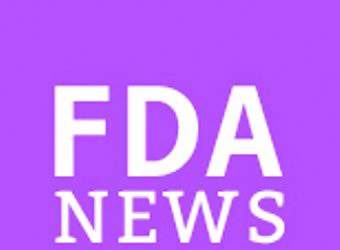FROM AN NIH/CDC TELEBRIEFING
Americans are increasingly relying on dietary supplements and yoga as their preferred forms of complementary health care, according to findings from two federal government surveys of over 100,000 adults and children.
The newly released data indicate that nonvitamin and nonmineral dietary supplements, such as fish oil and melatonin, have become the most popular forms of complementary medicine among American adults with 18.9% of surveyed adults in 2002 saying they use them and 17.7% of adults indicating they used such supplements in 2007 and 2012. Also popular are deep-breathing exercises – which were used by 11.6%, 12.7%, and 10.9% of American adults in 2002, 2007, and 2012, respectively. Activities like yoga, tai chi, and Qigong also increased in popularity from 5.8% in 2002 to 6.7% in 2007, and 10.1% in 2012 (P < .05 for all).
These findings come from two new studies – one focused on adults, the other on children – conducted jointly by the National Institute of Health’s National Center for Complementary and Integrative Health (NCCIH) and the Centers for Disease Control and Prevention’s National Center for Health Statistics (NCHS) and called the National Health Interview Survey (NHIS) . The investigators surveyed 88,962 adults aged 18 years or older and interviewed 17,321 “knowledgeable adults” for information on children aged 4-17 years during the years 2002, 2007, and 2012.
“The survey data suggest that consumers are paying attention to medical evidence and using it to inform their decisions,” said Dr. Josephine P. Briggs, director of NCCIH, during a telebriefing with reporters on Tuesday. ”For example, the use of melatonin, shown in studies to have some benefits for sleep issues, has risen dramatically. Conversely, the use of echinacea has fallen, which may reflect conflicting results from studies on whether it’s helpful for colds. While NHIS does not assess why shifts in use occur, some of the trends are in line with published research on the efficacy of natural products and reaffirm why it is important for NIH to study these products and to provide that information to the public.”
Yoga, in particular, has increased in popularity tremendously since 2002. As of 2012, approximately 1.7 million children and 21 million adults practiced yoga, the latter figure being twice as high as the number from 2002 and the former increasing by roughly 400,000 over the same time frame. Demographically, the percentage of Americans aged 45-64 years practicing yoga increased from 5.2% to 7.2%, with significant increases seen in the number of Hispanic- or Latino-origin individuals practicing yoga.
Meditation was among the top five most commonly used treatment options used during each year of the survey, with 7.6%, 9.4%, and 8.0% of adults using it in 2002, 2007, and 2012, respectively. The highest individual form of treatment used in 2007 was homeopathy (88.8%), while acupuncture was the most common in 2012 (70.1%). In children, complementary health care approaches were most commonly used to treat back and neck pain, head or chest colds, anxiety, stress, and “other musculoskeletal conditions” (P < .05 for all).
The quantity and types of complementary medicine approaches used among children also changed between 2002 and 2012. Fish oil became the most popular natural product of any kind among children, surpassing echinacea, which was the top product in 2007. Melatonin also surged in use among American children and experienced a substantial increase in use from 2007 (0.1%) to 2012 (0.7%). Overall, the number of children who used complementary medicine to treat a specific medical concern grew from 44.2% in 2007 to 45.6% in 2012 (P < .05 for all).
Both adults and children reported decreases in the use of certain other complementary health care treatments. Glucosamine, chondroitin, and garlic were used significantly less by adults between 2002 and 2012, while Ayurveda, biofeedback, guided imagery hypnosis, and energy healing therapy all had “consistently low prevalence” and did not chance significantly over time. Additionally, the use of healers dropped off over the course of the study’s time period. Only 0.1% of children used garlic supplements, combination herb pills, ginseng, cranberry, glucosamine, or chondroitin by 2012.
Complementary medicine, also known as “alternative” or “integrative” medicine, comprises health care approaches that lie outside the realm of what would traditionally be called mainstream or “Western” medicine, and is used by nearly 40% of Americans, according to the NIH , to treat a wide range of illnesses and alleviate symptoms of chronic pain, among other things.



